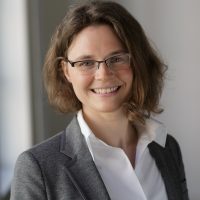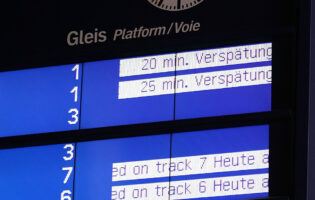
The Age of Youth: Civil Society and International Understanding Since World War II

Christiane Wienand
University of Heidelberg
Dr. Christiane Wienand is a historian and works at the University of Heidelberg (Universität Heidelberg), Germany. She is Executive Director (Geschäftsführerin) of the Heidelberg School of Education (HSE), the joint institution for teacher training of the University of Heidelberg and the University of Education Heidelberg. Prior to this, Christiane worked as a postdoctoral researcher in the interdisciplinary research group “Reverberations of War” (directed by Professor Mary Fulbrook and funded by the Arts and Humanities Research Council) at University College London (UCL), UK.
Christiane has published widely on post-1945 European history, particularly on questions relating to reconciliation, youth culture, identity and memory. Her publications include: “Reverberations of a Disturbing Past: Reconciliation Activities of Young West Germans in the 1960s and 1970s,” In: Stephanie Bird, Mary Fulbrook, Julia Wagner und Christiane Wienand (eds.), Reverberations of Nazi Violence in Germany and Beyond. Disturbing Pasts, S. 215–232. London: Bloomsbury Academic, 2016, and her monograph “Returning Memories. Former Prisoners of War in Divided and Reunited Germany.” Rochester/NY: Camden House, 2015.
She is a 2017-2018 participant in AICGS’ project “A German-American Dialogue of the Next Generation: Global Responsibility, Joint Engagement,” sponsored by the Transatlantik-Programm der Bundesrepublik Deutschland aus Mitteln des European Recovery Program (ERP) des Bundesministeriums für Wirtschaft und Energie (BMWi).
After World War II, various discourses emerged that assigned the “youth” and the “young generation” to an important role for the material and mental reconstruction of the postwar societies. These discourses partly referred back to interwar traditions and concepts of the international youth movement; partly they emerged out of the specific postwar situation that was shaped by destruction, despair, and the upcoming Cold War. Besides these discourses there were also activities and practices on the level of civil society in which young people were involved as agents for international understanding and dialogue across nations. In discoursive terms, the young generation thereby appeared as an unburdened carrier of hope for peace and reconciliation; in practical terms, they put forward personal encounters as well as larger social and political integration processes. With respect to transatlantic relations, three sociocultural and geopolitical dimensions set the relevant transnational frameworks:
First, there were various discourses and practices across “Europe”: meaning the realm constituted by the reverberations of the European war theatre, thus spanning from the Soviet Union to the United Kingdom, from Southern to Northern Europe. This understanding of Europe inevitably has to include Israel (and particularly the German-Israeli relations), as World War II and its aftermath cannot be understood without considering the “rupture of civilization” through the Holocaust. These discourses were framed and shaped by the historical burden of the past, by notions of guilt and attempts of atonement, with the side effect that reconciliation activities often happened without the former perpetrators being part of it. Reconciliation discourse and practice was also linked with calls for European cultural and political integration, such as the symbolic demolitions of turnpikes at the German-French border by young Germans and Frenchmen. Second, there were discourses and practices that reinvented the idea of Socialist internationalism in the postwar setting, flowing e.g., into the World Youth Festivals. And third, there were discourses and practices that spread from the United States to various countries overseas. These activities evolved out of the international cultural politics of the U.S. at the time and produced a widespread net of youth activities, from all sorts of exchange programs to the “World Tape Pals.”
In the postwar era, references to the young generation were often made in positive terms, asking the youth for their contribution to shape a better past and a better future. Yet, the youth for itself—as much as the civil society—is neither good nor bad. The youth was and is not necessarily a driving force for international peace, understanding, and reconciliation, and if it was, not necessarily in our democratic, egalitarian sense: “Youth” encompasses all ends of the political and social spectrum. It does not describe a clearly defined age cohort, but rather needs to be analyzed as specific form of social experience and a category that was used by historical agents to frame and constitute the self or the other. As Honeck and Rosenberg put it, “youth is a concept that is both historically and culturally contingent.”
The role young people have played for international understanding in the aftermath of World War II and during the “hot times” of the Cold War might give us instructions for the current transatlantic situation: While we should encourage young people to get engaged in international dialogue, we should also be aware that the youth cannot and should not have the responsibility to solve all problems created by their parent and grandparent generation.









